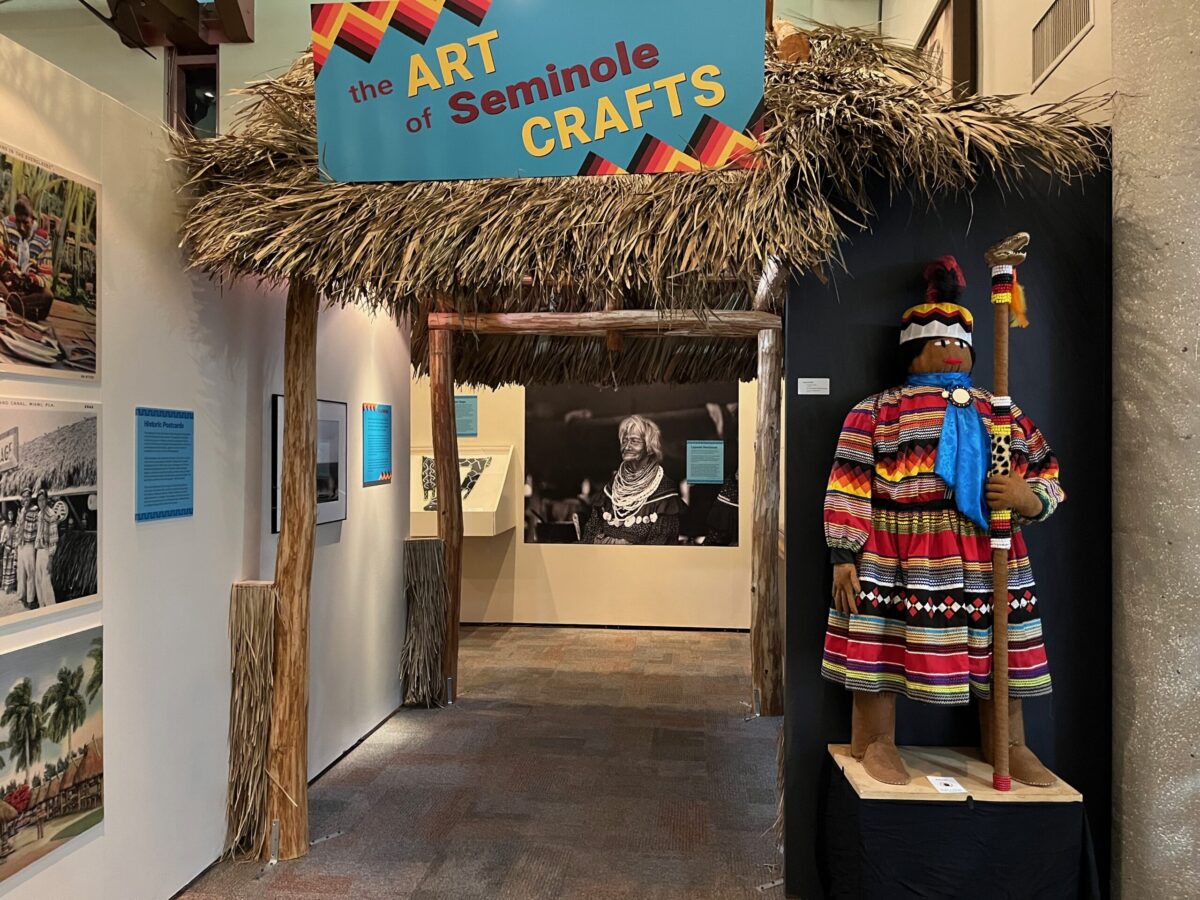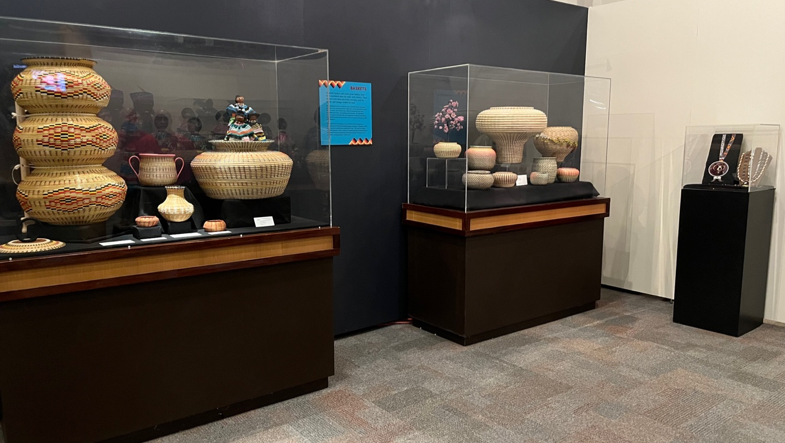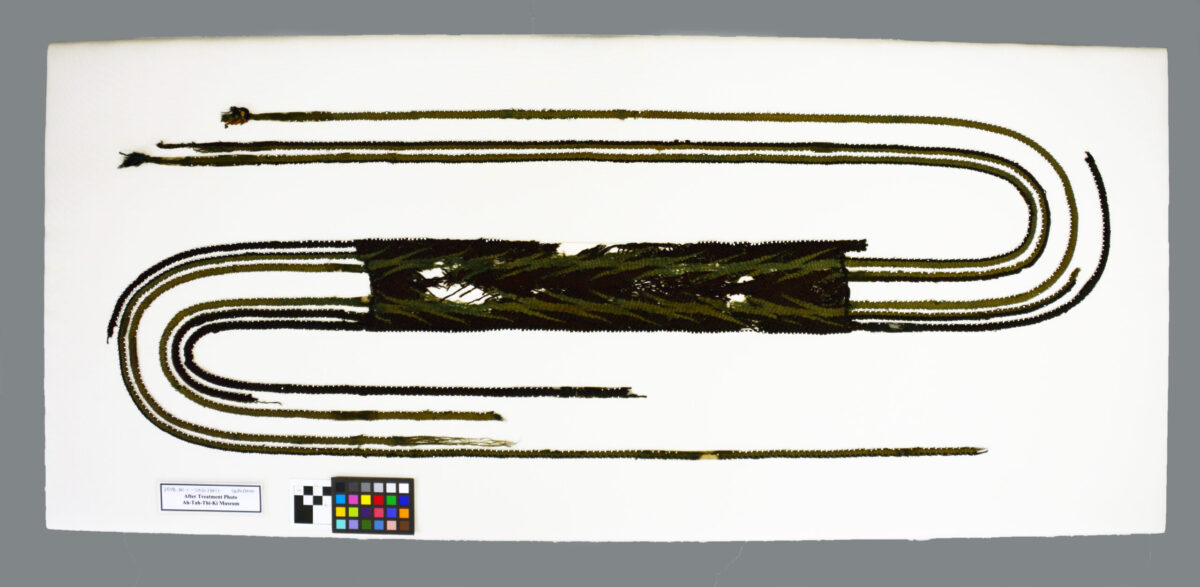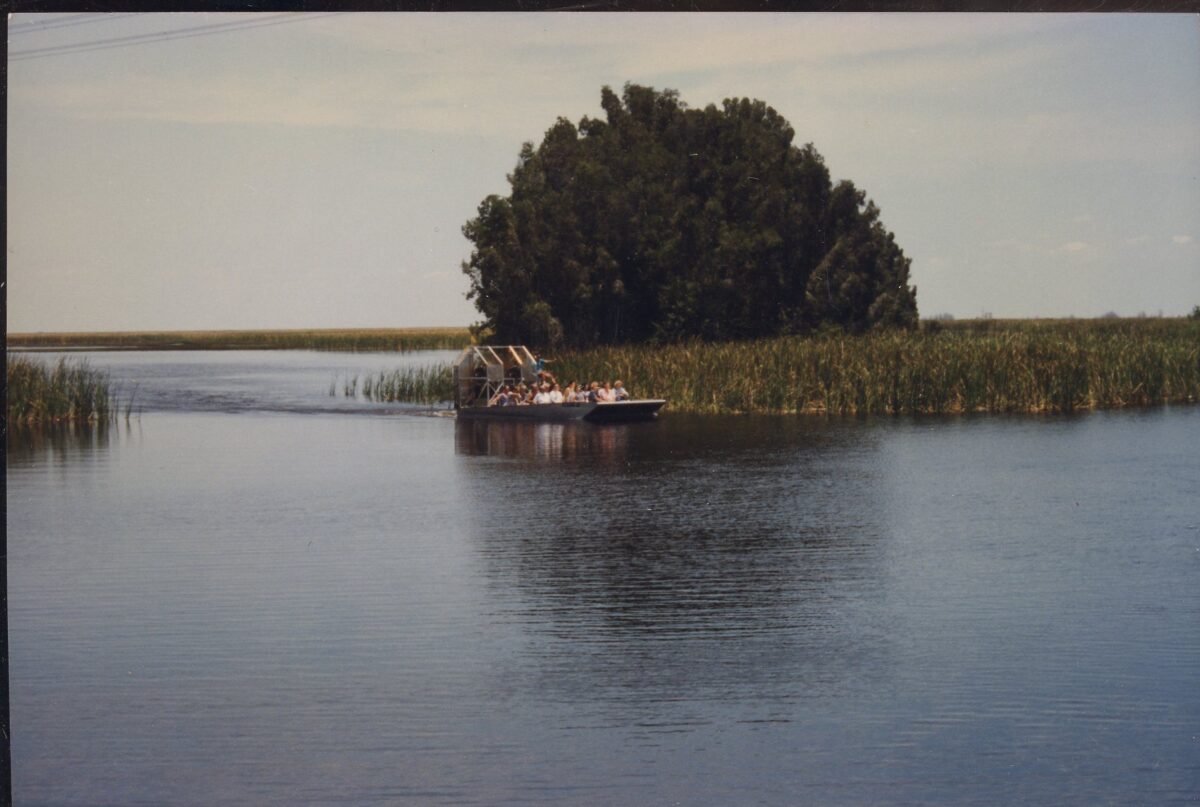
The Art of Seminole Crafts
At the heart of the Everglades, the Ah-Tah-Thi-Ki Museum on the Big Cypress Reservation is “a place to learn, a place to remember.” They are the caretakers of over 180,000 unique objects, and their mission is to “celebrate, preserve, and interpret Seminole history and culture.” The Museum does this by sharing Seminole history and culture through exhibits, events, learning opportunities, and by being a resource for the community. While the Museum has several permanent galleries, three galleries feature rotating exhibits. These change periodically, and thus offer a more intimate view of some of the most interesting and niche aspects of Seminole culture.
Recently, I had the pleasure of visiting a newly opened exhibit, The Art of Seminole Crafts, and spoke to Head of Exhibitions James Patrick. This week, join us for a glimpse of that exhibit visit, and learn why The Art of Seminole Crafts is one exhibit you will not want to miss! For the purposes of this post, I have not included each section or piece in this exhibit. So, we encourage you to visit the Ah-Tah-Thi-Ki Museum to get the whole experience. If possible, we encourage you to take a guided tour (bring a group of 10 or more) to hear more about the artists and get the most out of your time with the Ah-Tah-Thi-Ki Museum!
The Exhibit
In The Art of Seminole Crafts, the focus is on the rich history and tradition of Seminole crafts, and the artists who make them. Replacing Alligator Wrestling: Danger. Tradition. Entertainment. in the West Gallery, this new exhibit is a colorful, fun, and engaging slice of Seminole art and tradition. In our featured photo, you can see the entrance, where you enter under the fronds of a chickee. The Seminole word for “house,” chickees are a functional, quickly constructed structure made of palmetto thatching on a cypress log frame.
This type of architecture grew in the 1800s. During the Seminole War period, Seminoles needed fast, disposable shelters that could be taken up and down while evading U.S. troops. Chickees became a long-term tradition, one still popular throughout Florida today. So, it was important to include chickees, as they are also part of traditional Seminole art, and a robust crafting tradition. Much like chickees, the art featured in this exhibit exemplifies resilience, tradition, and a multi-generational commitment. Seminole art and crafts were instrumental in Seminole economic independence in the early 20th century. The chickee at the entrance also nods to Seminole tourist camps where crafts much like those featured in the exhibit would be sold to tourists. Historic postcards showing scenes at Musa Isle and other camps, and historic photographs, are prominently featured to provide historic context to the crafting traditions.
What is unique and special, though, is the juxtaposition of these important historic moments and the modern crafts featured in the exhibit. The Seminole people are a living culture, and their art and crafts come from a place of tradition that has changed and adapted to today. As you move through the exhibit, consider the ways Seminole art has shifted and changed over time, while staying rooted in traditional practices.

Dolls, Beads, and Baskets
The art, and in turn the artists, are at the heart of this exhibit. Playfully displayed and vibrantly colored, each piece included in the exhibit deserves its own moment as you walk through. This includes beadwork, historic postcards and photographs, necklaces, Seminole dolls, sweetgrass baskets, a Seminole totem pole, and even a replica war club and cuff. There is a wealth of Seminole art, and it begins the moment you step into the exhibit.
Under the chickee to the right is Martha Tommie’s walking stick, beaded by Ricky Doctor and depicting the Seminole clans. Actually, Ricky Doctor’s beadwork bookends the exhibit. The walking stick is one of the first things you see as you enter, and a beaded alligator teeth necklace is one of the last as you reach the end. As you turn the corner, beaded necklaces by Tina Osceola, a bandolier bag by Brian Zepeda, totem pole by Mark Billie, and Seminole dolls by Mabel Doctor, Judy Bill Osceola, Maggie Osceola, and Judy Baker fill your vision.
Placed at the entrance of the exhibit under the chickee is one of three large Seminole doll figures. Two more flank an exhibit case filled with dolls (above) near the end. Seminole dolls are one of the most recognizable Seminole crafts. Seminoles regularly sold dolls at tourist camps for profit. The large doll trio were made by Mabel Doctor, who dressed them in traditional styles and patchwork. The female doll wears a lace cape and long skirt, with beaded necklaces and traditional style hair. The male dolls wear bigshirts and turbans. Although Seminole dolls are usually made of palmetto fiber, these larger than life figures are made of felt and cotton. The case is filled with more dolls, each unique and intricate enough to keep your interest for hours.
Historic and Modern Art
The Art of Seminole Crafts blends historic tradition with modern art, artists, and styles. In every section of the exhibit, you can find traditional crafts made new by modern artists. Below, you can see a historic photo of Tigertail’s widow wearing many beaded, layered necklaces. Tigertail was a prominent leader during the Second Seminole War. Photographer Julian Dimock took the photo during his 1910s expedition across Southern Florida, where he photographed many aspects of daily Seminole life. Beadwork and jewelry have always been part of Seminole culture, and in particular were an important part of Seminole women’s daily routine. Seminole women would layer many necklaces, bundling and placing them on each morning, and reversing the process at night. Directly to the right of this are modern Seminole beaded necklaces, many with coin detailing, made by Tina Osceola.

After this, a modern bandolier bag made by Brian Zepeda is laid out in a display case. Bandolier bags are envelope style bags with a triangle front and broad-banded strap intended to be worn cross-body. Often made of wool or cotton, they can have intricate seed bead detailing. Traditionally, men made these bags. Also, only men handled the items they were intended to carry (tobacco, pipes, medicine, gunpowder, etc.) Seminoles made bandolier bags until approximately the 1860s and 1870s. Then, the art was lost due to the devastation of the Seminole War period. But, recently bandolier bags were revived through significant interest and commitment. Seminole artists meticulously studied and analyzed surviving bags to rejuvenate the practice.
Multigenerational Teaching
Multigenerational teaching and learning are intrinsic to Seminole art. This is incredibly apparent in the sweetgrass baskets display near the end of the gallery space. Below, you can see two exhibit cases full of Seminole sweetgrass baskets. Sweetgrass baskets are another important Seminole art and crafting tradition. Seminole women pass the craft down matrilineally. Older women teach younger girls how to gather supplies, weave, and make the baskets.
This exhibit is the perfect representation of that multigenerational teaching structure. The right case contains baskets made by artist Kiana Bell. Only 24 years old, Bell is an extremely talented basket-maker taught by Donna Frank. Some of Bell’s baskets feature delicate 3D flowers, a refreshingly modern twist that gives them a whimsical flair. In the left exhibit case are baskets by Linda Beletso and her daughter, Lorraine Posada, who we have mentioned in previous posts. Learn more about sweetgrass baskets, and how these talented makers make them here.

The exhibit includes both Beletso and Posada’s first baskets. This includes Linda’s first right-handed basket and her first left-handed basket. Beletso is right-handed. But, she initially learned basket-making left handed before switching. Beletso learned basket making from Donna Frank’s sister. Also displayed is Posada’s first ever basket, which she made for her mother. To the far left is one of Beletso’s three-tiered baskets, a style she is known for. This multi-generational style of learning is vital to the continuation of the art. It requires dedication from both teacher and student. But, it is one that some young Seminole artists are taking seriously. The exhibit features one other young artist in addition to Kiana Bell. At the end, in a case with Ricky Doctor’s beadwork, Chandler DeMayo’s replica alligator jaw club and scute cuff round out the exhibit.
Upcoming Events
The Art of Seminole Crafts is a delightful exhibit, full of variety, color, and unique artists that pour their talent into each piece. We encourage you to visit and spend some time with the art, as well as the artists who made it. The Ah-Tah-Thi-Ki Museum is hosting an Artist Meet and Greet 11am-12pm on December 16th. So, come by to visit the new exhibit and meet many of the artists featured in the exhibits. This exhibit ends spring 2023 so stop by the Ah-Tah-Thi-Ki Museum to see it before it is gone!
Still looking for holiday gifts? That same day, you can cross the street to the Museum Festival Grounds for the first day of the Ah-Tah-Thi-Ki Holiday Market, where you can buy some Seminole crafts for yourself! The market will run December 16th and 17th from 10am-4pm. Native arts, crafts, clothing, and jewelry will be for sale, and Seminole food vendors will also be on site. Additionally, admission to the event is free.
Author Bio
Originally from Washington state, Deanna Butler received her BA in Archaeological Sciences from the University of Washington in 2014. Deanna moved to South Florida in 2016. Soon, she began working for the Seminole Tribe of Florida’s Tribal Historic Preservation Office. Deanna was the THPO’s Archaeological Collections Assistant from 2017-2021. While at the THPO, Deanna worked to preserve, support, and process the Tribe’s archaeological collection. She often wrote the popular Artifact of the Month series, and worked on many community and educational outreach programs. She lives in Fort Myers, FL with her husband, son, and dog.



